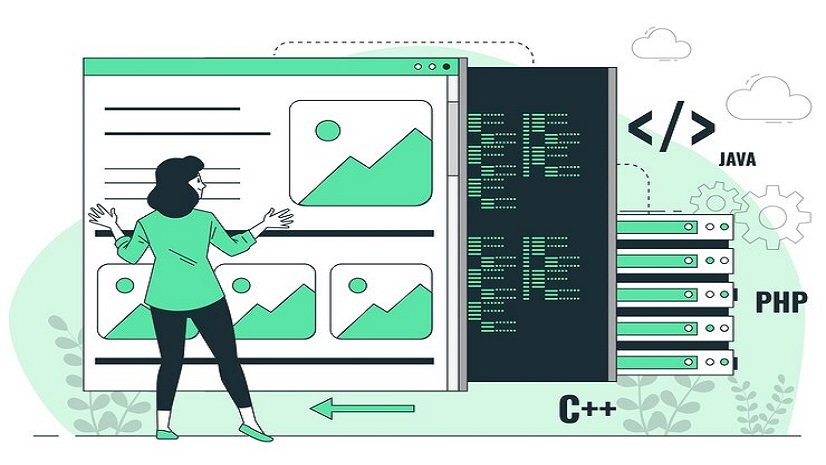
Understanding the Spring Framework in Java
Introduction
The Spring framework is one of the most widely used Java frameworks, providing comprehensive infrastructure support for developing robust Java Spring applications. It simplifies Java development by offering features such as dependency injection, transaction management, and aspect-oriented programming.
In this article, we will explore the Spring framework in depth, understanding its core components, advantages, and how it integrates with various Java frameworks for enterprise application development.
What is the Spring Framework?
The Spring framework is an open-source, lightweight framework for Java development. It provides a comprehensive programming and configuration model for Java frameworks, making it easier to build scalable, maintainable, and testable applications. Java Spring simplifies the complexities of Java frameworks by offering various modules that can be used independently or together.
Key Features of the Spring Framework:
- Dependency Injection (DI): The Spring framework promotes loose coupling through DI, allowing objects to be injected into classes instead of being instantiated manually.
- Aspect-Oriented Programming (AOP): With AOP, Java Spring allows separation of cross-cutting concerns like logging, security, and transactions.
- Transaction Management: The Spring framework provides declarative transaction management, simplifying database interactions.
- Integration with Java Frameworks: It seamlessly integrates with other Java frameworks like Hibernate, JPA, and Struts.
- Microservices Development: Java Spring is widely used for developing microservices with Spring Boot.
- Security and Authentication: The Spring framework includes Spring Security to handle authentication and authorization efficiently.
Core Modules of the Spring Framework
The Spring framework is composed of several core modules, each serving a specific function in Java development:
1. Spring Core
The foundation of the Spring framework, it provides the Dependency Injection (DI) container, which is the backbone of Java Spring applications.
2. Spring AOP (Aspect-Oriented Programming)
This module allows developers to separate cross-cutting concerns in Java frameworks, such as logging and transaction management.
3. Spring MVC (Model-View-Controller)
Spring MVC is a powerful web framework within Java Spring that enables the development of RESTful web services and dynamic web applications.
4. Spring Data
Spring Data simplifies database interactions by integrating with Java frameworks like Hibernate, JPA, and JDBC.
5. Spring Boot
A subproject of the Spring framework, Spring Boot allows rapid application development with minimal configuration.
6. Spring Security
Used for securing Java Spring applications by managing authentication and authorization mechanisms.
7. Spring Cloud
A module within the Spring framework that provides tools for developing distributed cloud-based applications.
Advantages of Using the Spring Framework
Developers prefer the Spring framework due to its numerous advantages in Java development:
- Simplified Development: Java Spring abstracts complex configurations, reducing boilerplate code.
- Scalability: The Spring framework supports scalable application development, from small applications to large enterprise solutions.
- Modular Architecture: Developers can use specific Java Spring modules as needed, enhancing flexibility.
- Enterprise-Level Support: Large-scale enterprise applications benefit from the integration of Java frameworks like Spring Boot, Spring Data, and Spring Security.
- Testing Capabilities: Java Spring provides built-in testing support to streamline application testing.
- Seamless Integration: Works well with existing Java frameworks such as Hibernate, Struts, and JPA.
Spring Framework in Enterprise Application Development
The Spring framework is a top choice for enterprise Java development, enabling companies to build high-performance applications with features such as:
- Microservices Architecture: Java Spring is widely used for building microservices-based architectures, making applications more scalable and maintainable.
- Cloud-Native Applications: The Spring framework enables cloud-native development with Spring Cloud.
- Database Management: Spring Data integrates with various databases, enhancing performance and scalability.
- Security and Compliance: Spring Security ensures enterprise applications meet compliance and security requirements.
Spring Framework for Web Application Development
One of the most common use cases of the Spring framework is web application development. Spring MVC, a critical part of Java Spring, provides a powerful Model-View-Controller architecture that enables developers to create scalable and maintainable web applications. The Spring framework allows seamless integration with frontend technologies like Angular and React, making it an ideal choice for full-stack development.
Spring Framework for Big Data Applications
The Spring framework is also widely used in big data processing applications. Spring Data allows integration with databases such as MongoDB, Cassandra, and Redis, enhancing data management capabilities. The support for batch processing with Spring Batch makes Java Spring an excellent choice for handling large volumes of data efficiently.
Spring Framework for Event-Driven Applications
Event-driven applications are becoming increasingly popular, and the Spring framework provides excellent support for building such applications. Spring Integration and Spring Kafka facilitate real-time messaging and event handling, making Java Spring an effective framework for reactive programming and real-time applications.
Spring Framework for AI and Machine Learning
With the growing demand for AI and machine learning applications, the Spring framework is evolving to support these technologies. Java Spring integrates with TensorFlow, Apache Spark, and other machine learning frameworks to help developers build intelligent applications.
Conclusion
The Spring framework continues to be one of the most robust and flexible Java frameworks available today. With its extensive support for web applications, microservices, big data, event-driven applications, and AI-driven solutions, Java Spring remains the preferred choice for modern Java development. The future of the Spring framework looks promising as it adapts to new trends and technologies, ensuring its relevance in the ever-evolving software industry.
Read Our More Blog: Java SE vs JDK: Key Differences Explained


